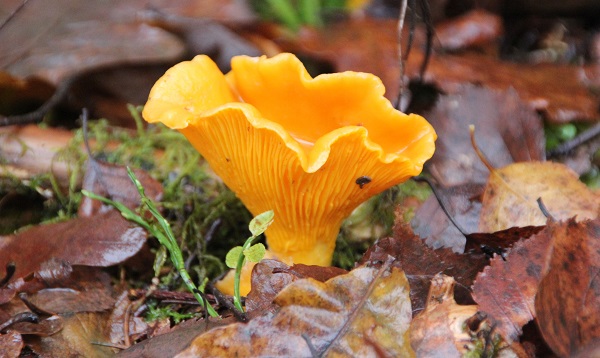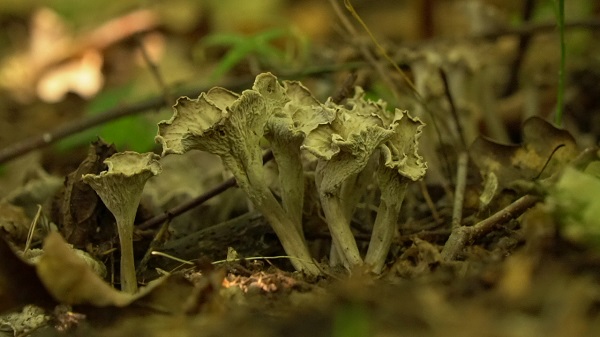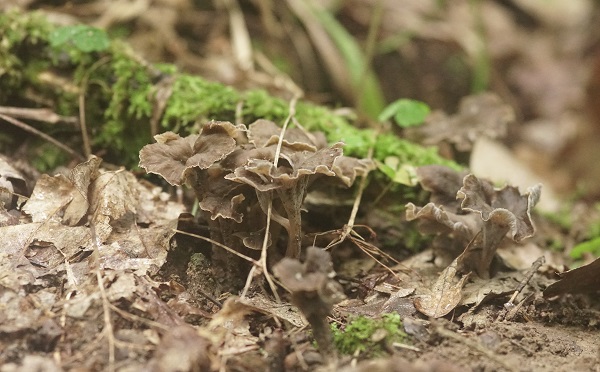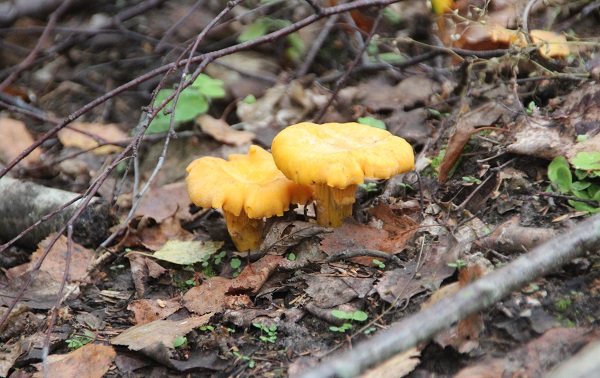Unusual and Common – the Chanterelle
The mushroom picking season has begun in forests across Latvia, and the green mosses are now decorated with caps of different colours. This time, nature researcher Ilmārs Tīrmanis reveals a number of interesting facts about one of the mushrooms that is widespread in Latvian forests and which is known by probably everyone – the common chanterelle or Cantharellus cibarius.
Until late autumn
The chanterelle is one of those mushrooms that form fruiting bodies both in summer and autumn. It belongs to the “company” of early-harvesting mushrooms, and more impatient mushroom pickers can find a fruiting body of this species even as early as before the summer solstice. If there is no shortage of moisture, mass growth of common chanterelles begins in July, usually around the middle of the month. The ripening of fruiting bodies continues until late autumn, and it is quite normal if chanterelle fruiting bodies are still to be spotted in Latvian forests in October and November. By the way, some years, the fruiting bodies of this mushroom, unless they are covered with a blanket of snow, can be found even at the beginning of winter. Usually, they are formations that developed much earlier, but are naturally conserved in the cold and thus well preserved. The common chanterelle lives almost anywhere where the conditions are right. This fungus gets along well with many species of trees, but preferably with birches, firs, oaks, and pines.
Of course, the common chanterelle is not only to be found in Latvia, but also is widespread throughout the forests of the temperate climate. True, in some European country this mushroom has become rare, even disappeared in some regions. There are relatively many forests inhabited by the common chanterelle in Latvia.
The common chanterelle has adapted to different forest types, growing in mixed, conifer, and deciduous stands. However, this fungus has difficulty settling in newly created forests, either created naturally, or created purposefully on agricultural lands; it is because the chanterelle likes that there are remnants of an old forest under the new forest.
Easy to notice and recognize
Chanterelles are often found in the forests of Latvia and are easy to recognize. There is no significant demarcation between the stem and the cap of the chanterelle – the transition from one part to the other is gradual. The underside of the cap of the fruiting bodies is decorated with a neat fold. As it develops, the cap changes: at first it is usually round, with a folded edge, then it becomes more or less (depending on maturity) funnel-shaped and wavy. The colour of the fruiting bodies is basically yellow, but it varies from pale yellow to bright orange. Above ground, several fruiting bodies usually appear together, often in numerous groups. More often, these groups are chaotic, but sometimes fruiting bodies tend to be arranged in rows or circles.
A sister to chanterelle
By the way, the common chanterelle or Cantharellus cibarius is not the only chanterelle to be spotted in Latvia. Our forests are also inhabited by the Yellow Foot (Craterellus lutescens), the funnel chanterelle (Craterellus tubaeformis), the much rarer Cantharellus ferruginascens and the relatively rare Cantharellus cinereus. The chanterelles of all these species, like common chanterelles, are edible without pre-boiling. Just cook and enjoy!
Cantharellus cinereus
Similar to the Cantharellus cinereus are the chanterelle-related Pseudocraterellus sinuosus, Craterellus cornucopioides, or horn of plenty, as well as the fruiting bodies of the rare Gomphus clavatus, commonly known as pig's ears.
Pseudocraterellus sinuosus
Similar to the common chanterelle is the Hygrophoropsis aurantiaca, commonly known as the false chanterelle; however, they are not recommended for consumption. When viewed from above, the similarity with the fruiting bodies of the common chanterelle can also be seen in the fruiting bodies of the Hydnum repandum, commonly known as the sweet tooth.
An autumn delicacy
In Europe, common chanterelle has been used in cooking since the time of the Roman Empire. Today, the common chanterelle is valued as a high-quality edible mushroom, which is even given the status of a delicacy in some countries. Its fruiting bodies have a slightly sour, slightly spicy taste and an aroma similar to the smell of unripe nuts, as if soured fruits.
As compared to many other edible mushrooms, neither true chanterelles nor their non-poisonous counterparts are a hearty food, they do not have a particularly high energy value. Another valuable characteristic of chanterelles is that they do not contain any toxins. Therefore, these mushrooms can be eaten without pre-boiling, but freshly fried or even just fried. It is also safe to use them dried. It is during drying that mushroom fruiting bodies lose the least of their taste and smell; therefore, for longer storage it is recommended to prepare mushrooms by drying them. When processing chanterelle fruiting bodies industrially, drying is replaced by artificial drying, after which the product is usually turned into mushroom powder.
Popular with traders
For the needs of industrial processing, common chanterelles are collected in large quantities every year in the forests of Latvia during the warm season. Chanterelles are in high demand both in the local and global markets. But why are many of the mushroom buyers interested mainly only in chanterelles? One of the reasons is that chanterelle fruiting bodies, unlike the fruiting bodies of most other popular edible mushrooms, even when they have already grown and matured, still remain intact for a very long time. When cut, chanterelles do not lose their consistency or strength, so they can be stored fresh for a relatively long time without any processing. Chanterelles are also easy to transport, so they are good for export.
Also important is the fact that the fruiting bodies of these mushrooms are usually not gnawed by snails (the chanterelle might not have enough nutrients for these animals). Even more important: chanterelle fruiting bodies are rarely “wormy”; in rare cases, they contain only some offspring of wireworms. The new generation of almost no species of insects lives in the mushroom because. It is because the mushroom contains a higher concentration of chitinase than many other mushrooms; it is an enzyme that breaks down chitin, the most important of the substances that make up the body covering of insects. When exposed to concentrated chitinase, chitin is rapidly degraded. The outer shell of larvae is relatively thick and strengthened in a different way, so there is no chitinase “through the tooth”.






